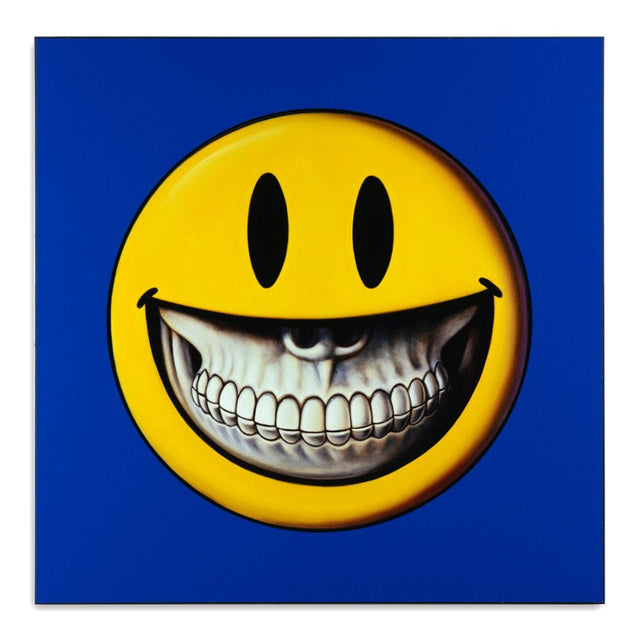
Smiley Face
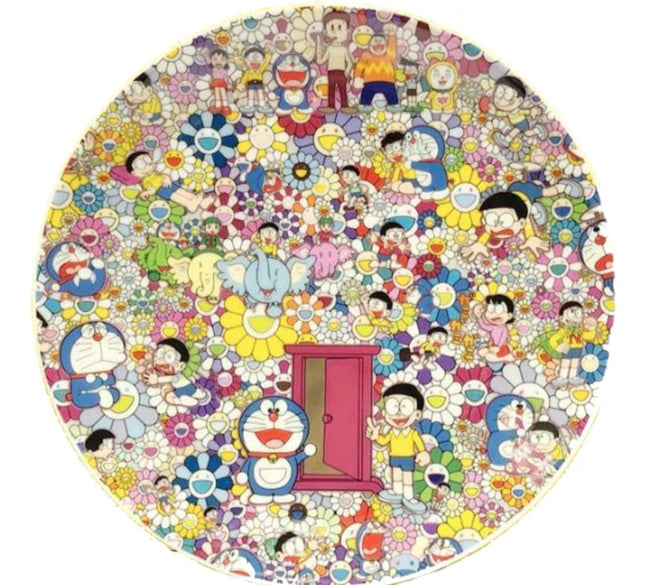
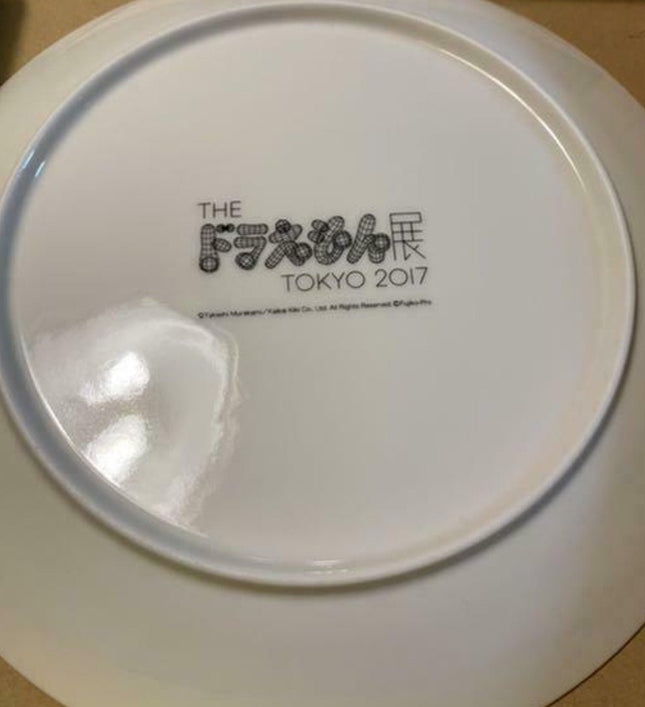
Takashi Murakami TM/KK Doraemon Exhibition Tokyo Archival Pigment Plate by Takashi Murakami TM/KK
Doraemon Exhibition Tokyo Plate Limited Edition Archival Pigment Print Art on Ceramic Plate Artwork by Famous Artist Takashi Murakami TM/KK. 2017 Limited Edition Size 9" Collectible Art Plate Takashi Murakami's Intersection of Traditional and Pop Culture Takashi Murakami, a renowned artist whose work has consistently blurred the lines between fine art and pop culture, created a piece for the Doraemon Exhibition in Tokyo that captures the essence of this fusion. The exhibition piece, a limited edition 9-inch ceramic plate, features Murakami's signature style, often incorporating brightly colored anime and manga characters into traditional artistic formats. Artistic Elements and Cultural Influence Murakami's work on the Doraemon Exhibition plate is an archival pigment print that brings street pop art's vibrancy to the ceramic medium. This artwork stands out for its amalgamation of characters from the popular Japanese series 'Doraemon' with Murakami's distinctive flower motifs and designs. The characters are set against a backdrop of many flowers, creating a complex, eye-catching pattern that represents Murakami's exploration of contemporary Japanese society and otaku culture within the context of historical artistic practices. Murakami's Unique Style and the Art World Murakami's approach often involves a dialogue between different cultural elements, combining traditional Japanese artistic techniques with the mass appeal of anime and manga. His method is rooted in the "Superflat" concept, which he coined to describe the cultural commentary embedded in his artworks. This style is evident in the Doraemon Exhibition plate, where the flattened pictorial plane and the juxtaposition of characters suggest a deeper narrative on the influence of pop culture in our lives. Pop Art, Street Art, and Their Confluence By incorporating elements of street pop art and graffiti artwork into his ceramic plate design, Murakami contributes to the ongoing conversation about the validity and importance of pop culture in the art world. He elevates the perception of animated characters by placing them within the context of 'high art,' challenging preconceived notions about the value and meaning of pop and street art. Collectibility and Murakami's Global Impact The Doraemon Exhibition plate is a piece of art and a collectible item that has garnered attention from art collectors and enthusiasts worldwide. Murakami's ability to traverse the line between art and commodity has made his works highly sought after, and pieces like the Doraemon plate continue to shape the landscape of contemporary art collecting. Through these collectibles, Murakami has left a significant mark on global art culture, influencing new generations of artists and collectors alike. This Doraemon Exhibition plate by Takashi Murakami is a testament to the transformative power of pop culture within the art world and its ability to create new dialogues and understandings across different mediums and cultural backgrounds.
$500.00
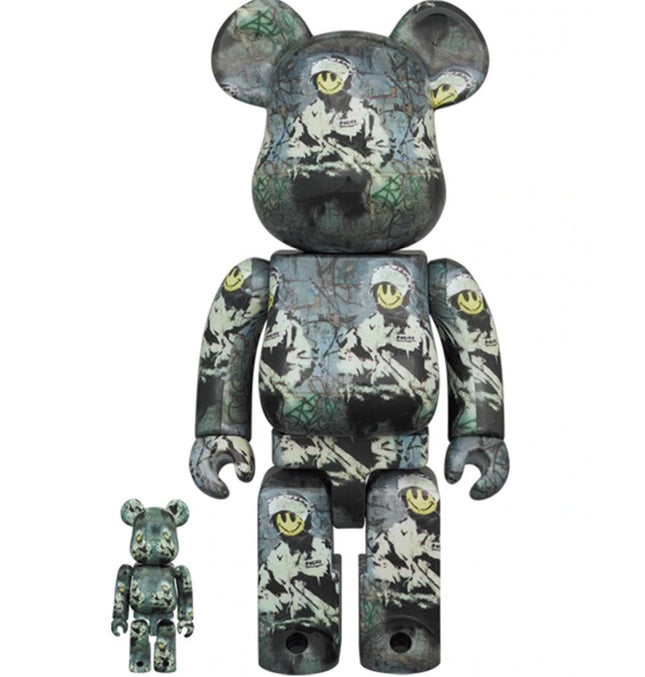
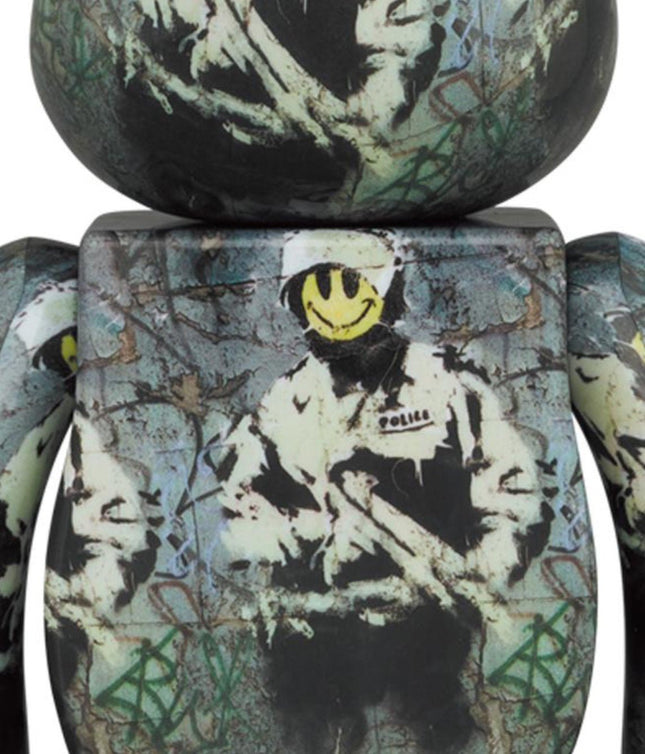
Brandalism & Brandalised Riot Cop 100% & 400% Be@rbrick by Brandalised x Medicom Toy x Banksy
Riot Cop 100% & 400% BE@RBRICK Limited Edition Medicom Vinyl Artwork Toy Collectable Art Figure by Brandalism. 2022 New In Box Brandalised x Medicom Toy x Banksy 2022 Medicom Toy Popular artist Banksy returns with the Riot Cop Bearbrick! This is the third collaboration between Medicom Toy and Brandalism. Water transfer technology ensures unique print placements. The 100% and 400% size Bearbricks stand at 7cm and 28cm tall respectively.
$345.00$221.00
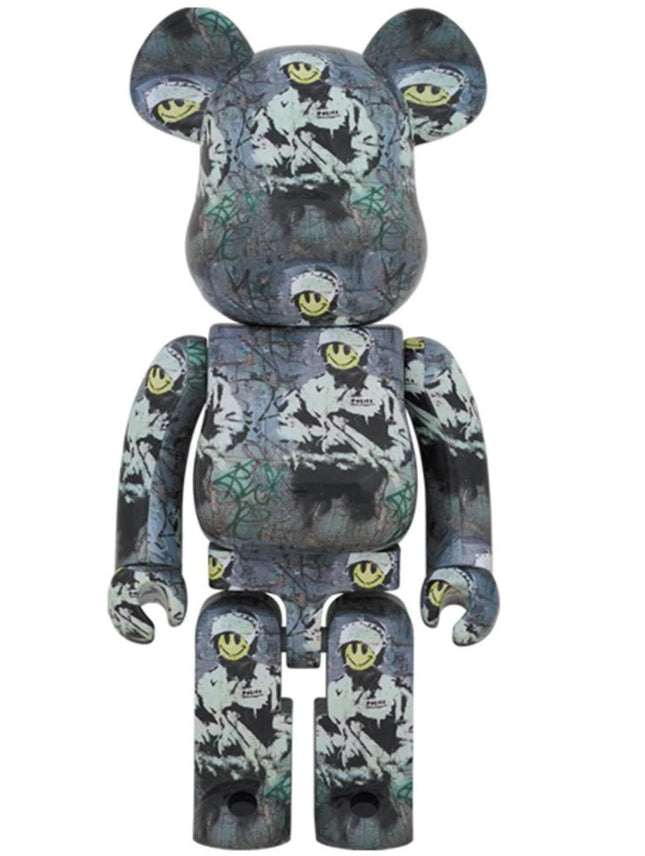
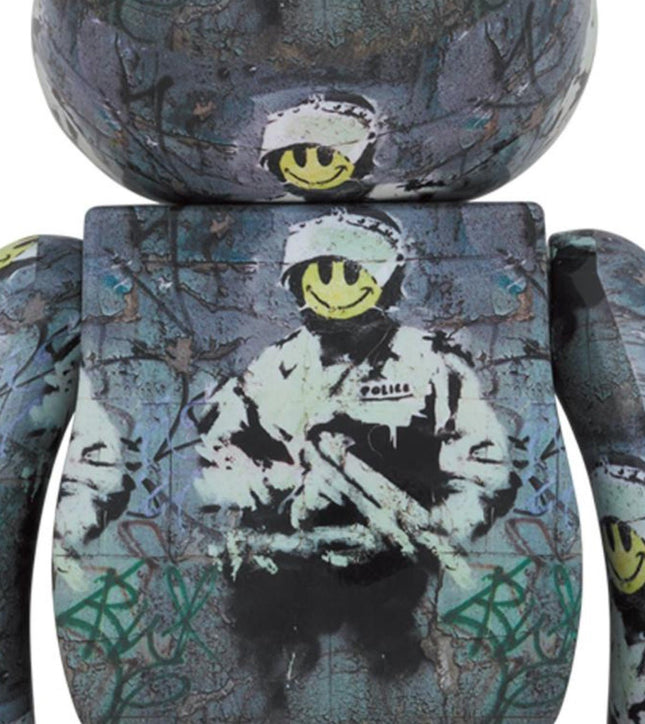
Brandalism & Brandalised Riot Cop 1000% Be@rbrick by Brandalised x Medicom Toy x Banksy
Riot Cop 1000% BE@RBRICK Limited Edition Vinyl Artwork Medicom Toy Collectable Art Figure by Brandalism. 2022 New In Box Brandalised x Medicom Toy x Banksy 2022 Medicom Toys Popular artist Banksy returns with the Riot Cop Bearbrick! This is the third collaboration between Medicom Toy and Brandalism. Water transfer technology ensures unique print placements. This large 1000% Bearbrick figure stands at 70cm!
$946.00
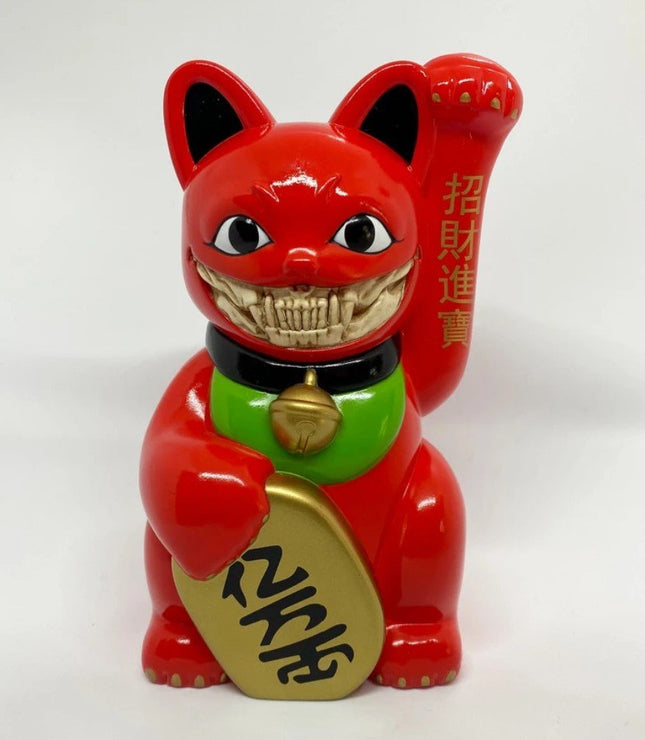
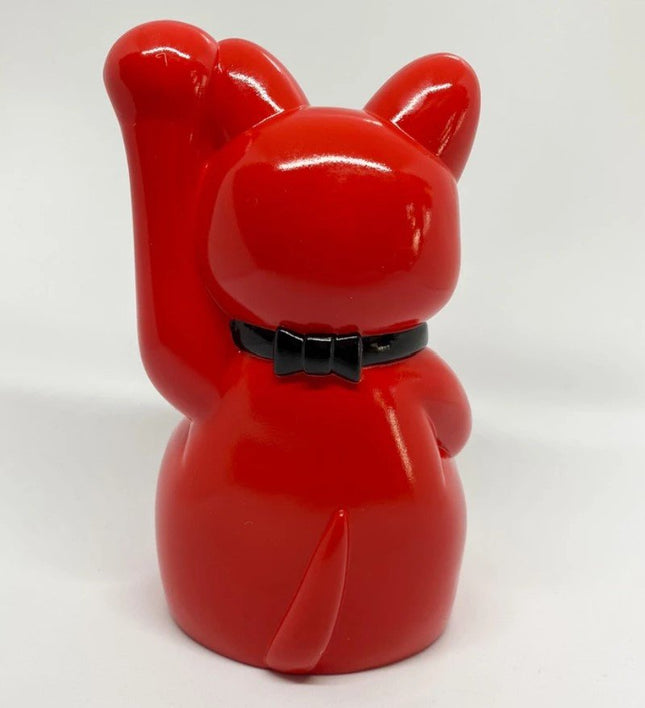
Ron English Lucky Cat Grin Convention Red Art Toy Sculpture by Ron English
Lucky Cat Grin- Convention Red Limited Edition Vinyl Art Toy Collectible Artwork by Artist Ron English Contemporary Pop Artwork. 2018 Signed Limited Edition New In Box SFBI x Ron English presents Lucky Cat Grin.6 inches tall. Hand-signed by Ron English, 2018 SDCC Exclusive
$364.00
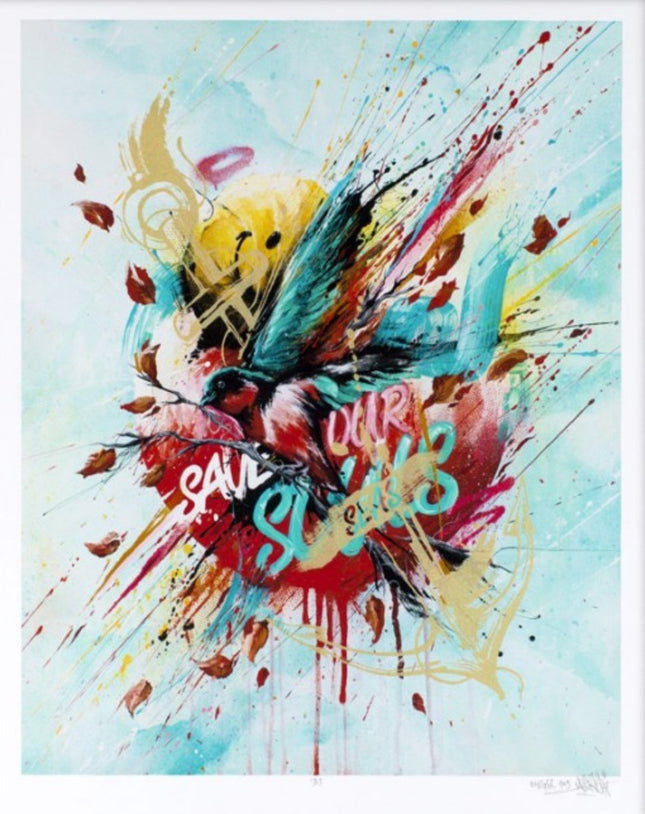
Meggs The Swallow Save Our Seas Archival Print by Meggs
The Swallow (Save Our Seas) Limited Edition Archival Pigment Prints on 310gsm Fine Art Paper by Meggs Graffiti Street Artist Modern Pop Art. PangeaSeed’s Sea Walls: Murals for Oceans is the first movement of its kind helping to save our seas via public art and activism (ARTivism). The festival will feature 30 world-renowned contemporary artists from across the globe, collaborating to bring vital ocean environmental issues into the spotlight. The festival’s educational workshops will engage local youth to learn more about critical marine environmental issues affecting their home island, and what they can do to help save our seas. Sea Walls aims to educate and inspire individuals and communities to protect the planet’s most important ecosystem: the ocean.
$209.00
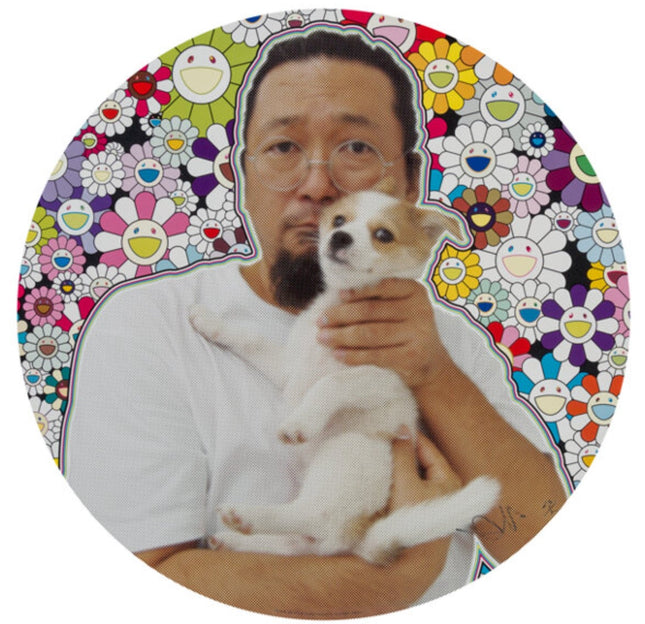
Takashi Murakami TM/KK POM & Me Lithograph Print by Takashi Murakami TM/KK
POM & Me Offset Lithograph Print Limited Edition Artwork on Round Smooth Wove Paper by Pop Urban Artist Takashi Murakami TM/KK. 2013 Signed & Numbered Limited Edition of 300 Round Cut Artwork Size 19.75x19.75 (Round) Takashi Murakami (b. 1962) POM & Me, 2013 Offset lithograph in colors on smooth wove paper 19-5/8 inches (49.8 cm) diameter (sheet) Ed. 300 Signed and numbered in ink lower right Published by Kaikai Kiki Co. Ltd., Tokyo "POM & Me" is a lithograph print by the renowned Japanese artist Takashi Murakami. Known for his unique style that blends traditional Japanese art with contemporary pop culture, Murakami has gained international acclaim for his work. His signature "Superflat" style is characterized by bold, vibrant colors and flattened, two-dimensional imagery. The "POM & Me" print is one of many artworks that Murakami has created over the years, often featuring his iconic characters and motifs. This particular piece includes recurring elements from Murakami's body of work, such as his famous flowers, himself and his dog Pom. As an artist, Murakami has worked in various media, from painting and sculpture to fashion and commercial products. His work has been exhibited in major galleries and museums worldwide, and he has collaborated with well-known brands and celebrities.
$2,706.00
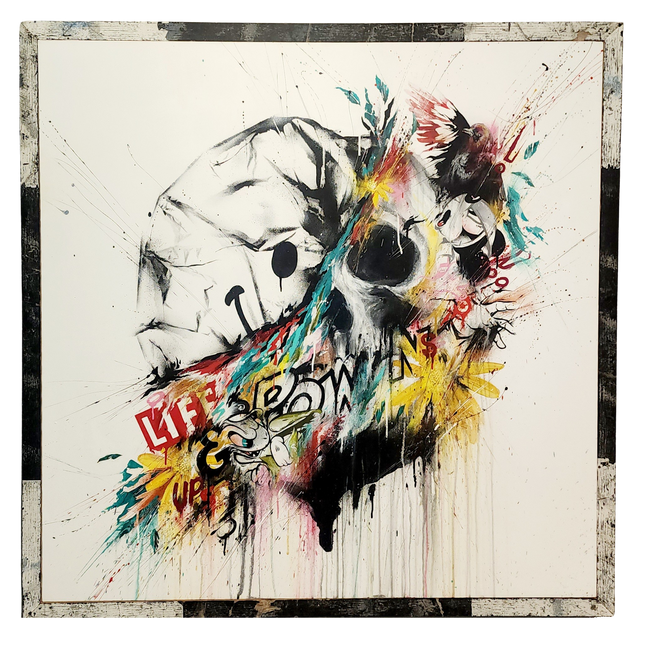
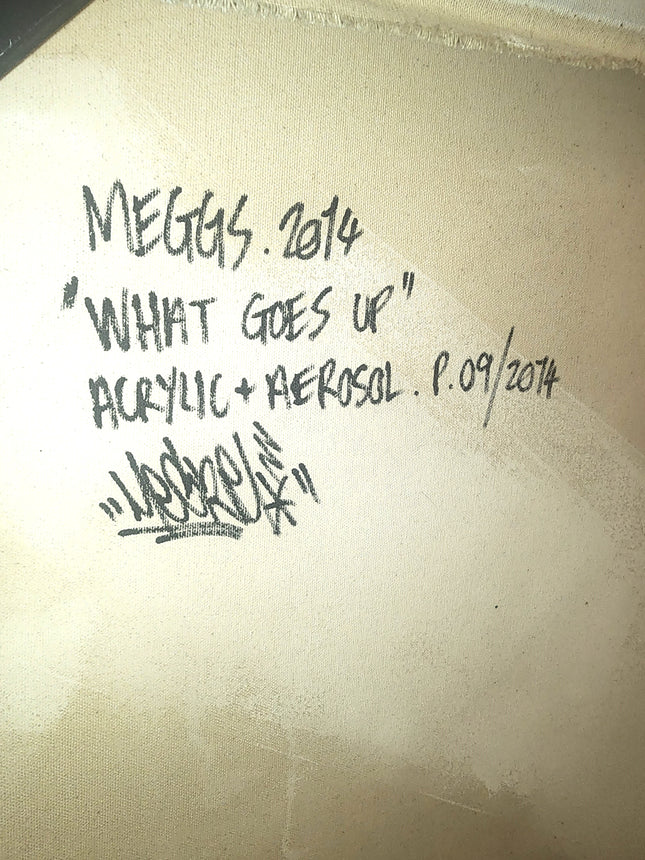
Meggs What Goes Up Original Spray Paint Acrylic Painting by Meggs
What Goes Up Original Spray Paint Acrylic Painting by Meggs One of a Kind Artwork on Canvas with Custom Reclaimed Wood Frame by Street Art Pop Artist. 2014 Signed Acrylic & Spray Paint Painting Original Canvas in Artist Hand Made Reclaimed Wood Frame Artwork Size 49x49. From Spoiled Rotten Show. Exploring the Dynamic Essence of Meggs' "What Goes Up" "What Goes Up" is an original acrylic and spray paint painting by the acclaimed street pop artist Meggs that encapsulates the dynamism and energy of his work. Created in 2014, this artwork reflects Meggs' signature style, which harmoniously blends street art's rawness with pop art's vividness. This one-of-a-kind artwork is a statement piece and a storytelling canvas that explores themes prevalent in Meggs' oeuvre, such as the constant struggle between opposing forces and the transient nature of success and failure. The painting measures 46x46 inches and is housed in a custom reclaimed wood frame handcrafted by the artist. Reclaimed wood adds an eco-conscious dimension to the artwork, reinforcing Meggs' interest in sustainability and the repurposing of materials. This choice of framing also accentuates the urban and gritty feel of the painting, resonating with the street art tradition of using found objects and spaces. Artistic Techniques and Visual Impact in "What Goes Up" Meggs employs acrylic and spray paint in "What Goes Up," showcasing his adeptness at using traditional and non-traditional media. The acrylic provides depth and texture, while the spray paint offers a sense of immediacy and spontaneity intrinsic to graffiti artwork. The painting is a cacophony of colors, bursting forth from a central point, suggesting an explosion of energy and creativity. The colors are not just randomly splashed across the canvas; they are meticulously layered to create a visual impact that is both chaotic and controlled. The artwork features a skull motif, a recurring element in Meggs' art, which often symbolizes the transient nature of human existence and the cyclical nature of life. However, in "What Goes Up," the skull is juxtaposed with vibrant colors and comic-style exclamations, which could be interpreted as a commentary on the superficiality of popular culture and the fleeting nature of fame and success. The skull seems to be disintegrating or exploding into an array of colors and shapes, a powerful visual metaphor for the inevitable downfall that follows a rise to the top. Cultural Commentary and the Essence of Street Pop Art The painting's title, "What Goes Up," hints at the adage "what goes up must come down," suggesting a narrative of ascent and descent. Meggs often infuses his Street Pop Art and graffiti Artwork with philosophical musings and critical observations of society. The work symbolizes the cyclical patterns of life and can be seen as a reflection of the transient nature of success or the hubris that often precedes a fall. The artist's use of text in the painting, rendered in a comic book style, adds a layer of communication with the viewer, inviting them to ponder the deeper meanings behind the vibrant facade. The piece is a testament to the artist's ability to navigate the space between gallery and street art, making it accessible to a diverse audience. The inclusivity of street art is evident in Meggs' work, where the public space becomes a canvas for dialogue, and the art becomes a part of the everyday urban landscape. "What Goes Up" is not just a visual spectacle but also a piece of cultural commentary, encapsulating the ethos of street art and its role in contemporary discourse. "What Goes Up" is a prime example of Meggs' impact on the field of street art and his contribution to the broader pop art movement. The painting manifests the artist's dedication to craft, concept, and commentary. Through the integration of various artistic techniques and the strategic use of reclaimed materials, Meggs has created an artwork that is both a visual feast and a conceptual powerhouse. The significance of Meggs' work lies in its ability to resonate with viewers on multiple levels. This work can be appreciated for its aesthetic qualities and ability to evoke emotion and provoke thought. As a piece of Street Pop Art and graffiti Artwork, "What Goes Up" embodies the spirit of this genre, which continues to push the boundaries of art and its place in society. It remains a poignant piece within Meggs' body of work and within the larger conversation of contemporary art.
$10,000.00













